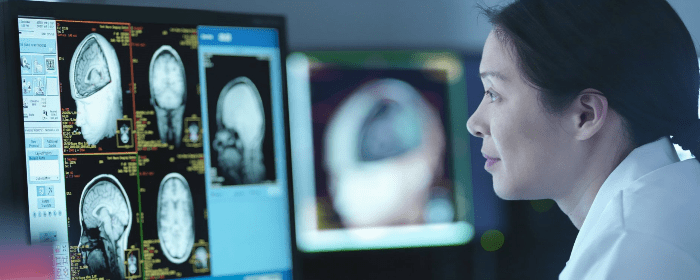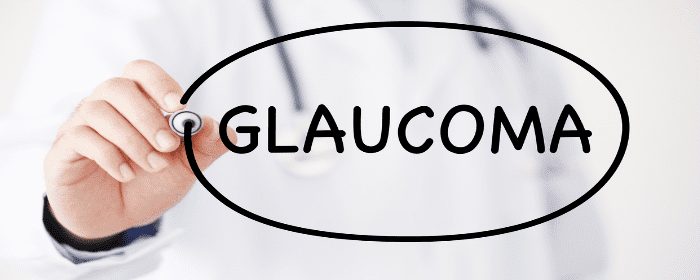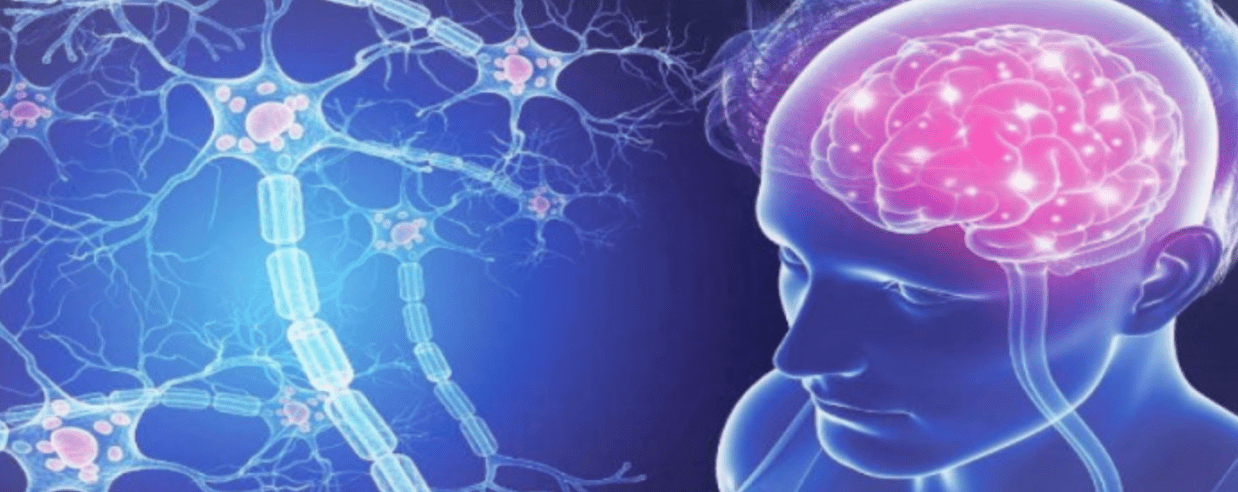
by Stemedix | May 31, 2021 | COPD, Stem Cell Therapy
Chronic obstructive pulmonary disease (COPD) affects 250 million people each year and is the cause of nearly 5% of deaths globally. This family of airway obstruction conditions is characterized by the loss of lung tissue and airway obstruction caused by chronic inflammation of the airways. As a result, components of the lungs, including the alveoli, are destroyed over time. Using regenerative medicine, including stem cell therapy, can address the damage caused by these conditions.
What Is COPD?
COPD is a progressive disorder that makes breathing very difficult. As the airways become obstructed, patients may experience symptoms such as mucus production, wheezing, cough, and difficulty breathing. Smoking is believed to be the cause of 85 to 90% of COPD cases, though factors such as long-term exposure to pollution or irritants could also contribute to the conditions.
The two main types of COPD are emphysema and chronic bronchitis. In emphysema, the alveoli at the end of the air passageways are destroyed by exposure to cigarette smoke or other irritants. In chronic bronchitis, the bronchial tubes become inflamed, which carry air to and from the air sacs.
Currently, there are several types of medications available to help control flare-ups of COPD, but each patient responds differently to treatments. There are also oxygen therapies available to aid patients with low blood oxygen levels and to provide easier breathing.
Stem Cell Therapy for COPD
Stem cell therapy is a natural alternative to other medications that have caused serious side effects or failed to produce measurable improvements. Through this regenerative medicine approach, patients’ air sacs and damaged lung tubes have the potential to be repaired, lung capacity increased and improved breathing.
Stem cells are the building blocks of the body due to their ability to regenerate and transform into virtually any specialized cell type. Through this treatment, stem cells are sourced by either the patient or an umbilical cord donor and re-delivered through direct injection, intravenously, and/or through a special nebulizer via inhalation. Depending on the patient’s condition, additional treatments may be needed. After stem cell therapy, COPD patients may be advised to undergo post-treatment lung rehabilitation to promoted optimal treatment outcomes.
Stem cell therapy continues to be an active topic in regenerative medicine research. It is not a cure and it may not be right for all patients with COPD, but it could be a promising alternative to anyone who is looking for other options outside of treatments with severe side effects or those that haven’t shown beneficial outcomes. If you are interested in learning more about Stem cell therapy for COPD contact a care coordinator today!

by admin | May 14, 2021 | Stem Cell Therapy, Mesenchymal Stem Cells, Stem Cell Research, Traumatic Brain Injury
According to the CDC, in 2019, traumatic brain injury (TBI) contributed to nearly 61,000 deaths in the United States alone[1]. While there are several clinical treatments designed to address the neurological dysfunction after sustaining a TBI, including hyperbaric oxygen, brain stimulation, and behavioral therapy, none appear to produce satisfactory or lasting results.
In recent years, several studies have demonstrated the therapeutic potential of various stem cells, including mesenchymal stem cells (MSCs), neural stem cells (NSCs), Multipotent adult progenitor cells (MAPCs), and endothelial progenitor cells (EPCs) in the treatment of neurological impairment resulting from TBI. Specific benefits of these stem cells observed throughout these studies demonstrate that exogenous stem cells have the ability to migrate to the site of damaged brain tissue, help to repair damaged tissue, and significantly improve neurological function.
In this article, Zhou et al. review recent findings on the role, effects, deficiencies, and related mechanisms of the various stem cells being used as therapeutic agents in the treatment of TBI.
Examining numerous studies occurring between 2010-17 and exploring various TBI models and the roles of different stem cells in animal models, the author’s general summary is that the use of stem cells demonstrated some form of measurable improvement in every study reviewed. As a reference, specific observed benefits included improved integrity of the blood-brain barrier; improved neurological function, social interaction, and motor performance; enhanced neurovascular repair and recovery; and enhanced cognitive and spatial learning, information retention, and memory retrieval.
The authors point out that although there appears to be a large amount of research exploring the complexity of pathophysiology and the application of stem cell therapy for treating TBI, many problems still exist and must be addressed before the best method for TBI recovery can be determined.
Specifically, while there have been several clinical studies exploring the role of stem cells in the role of TBI treatment and recovery, and while most demonstrate promising results, the studies have almost universally been completed on mice and/or rats, contained human sample sizes that are not large enough, or failed to include a control group. As a result, Zhou et al. call for further study, including multi-center long term follow-up and randomized prospective trials that examine the safety of stem cells, route of injection, the time of injection, and the specific mechanisms as a way to identify the appropriate and effective stem-cell-based therapeutic treatment options for those suffering from various types of TBI.
Source: (2019, August 13). Advance of Stem Cell Treatment for Traumatic Brain Injury. Retrieved from https://www.ncbi.nlm.nih.gov/pmc/articles/PMC6700304/
[1] (2021, May 12). Get the Facts About TBI | Concussion …. Retrieved from https://www.cdc.gov/traumaticbraininjury/get_the_facts.html

by Stemedix | May 10, 2021 | ALS, Stem Cell Therapy
Amyotrophic lateral sclerosis (ALS), also known as Lou Gehrig’s disease, is a rare disease in which the body’s neurons that control voluntary muscles begin to degenerate. Patients experience muscle weakening and involuntary spasticity, as well as symptoms such as muscle cramps and stiffness, and eventually, difficulty moving, speaking, swallowing, and breathing.
While there is currently no cure for the devastating illness, there are drugs that can increase the quality of life and marginally slow the disease’s progression. Researchers have long been pursuing a more effective treatment for the disease, and efforts were increased significantly as a result of the 2014 viral Ice Bucket Challenge, which raised at least $115 million for research efforts.
Stem Cell Therapy for ALS
One area that’s of particular interest to researchers is regenerative medicine therapy. Also known as stem cell therapy, this option could be a potential treatment for ALS, as it could help sustain and nurture motor neurons that have been compromised by the disease. This is due to stem cells’ ability to release neurotrophic factors, which support and protect nerve cells. This is not a cure, nor a guarantee, but is an option to help slow down the progression of the condition.
Stem cells can be harvested from sources such as the umbilical cord (Wharton’s Jelly), or the patient’s own adipose (fat) tissue, then strategically transplanted at locations such as the spinal canal, intravenous, or muscle tissue. Once in the brain tissues, stem cells have the potential to protect healthy neurons and replace those that have been compromised.
Experts are using stem cells both for research purposes, by creating cells genetically identical to patients to see how they’ll respond to treatments, as well as for treating patients directly. With their protective qualities, the cells can help preserve healthy cells and repair or replace those that have been damaged.
According to results from clinical trials, 87% of patients who received the treatment responded to the treatment with at least 25% improvement and slowed disease progression. Evidence also suggests the treatment is safe and well-tolerated.
While much of how ALS develops remains a mystery, researchers are hopeful that further investigation into stem cell therapy will help to drastically improve treatment outcomes compared to the drugs currently available. If you would like to learn more contact a care coordinator today!

by admin | Apr 23, 2021 | Glaucoma, Stem Cell Research, Stem Cell Therapy
Glaucoma is a group of eye conditions that damage the optic nerve and lead to progressive, irreversible loss of vision. With over 80 million people affected by the condition, glaucoma is the second-leading cause of blindness, behind only age-related macular degeneration.
Although there are several different risk factors, the most understood and treatable risk factor for glaucoma involves controlling the eye’s intraocular pressure, or IOP. When left unaddressed, glaucoma progressively leads to vision loss resulting from damage to axons and associated retinal ganglion cells (RGCs) responsible for transmitting visual information from the eye to the brain. While current treatments for glaucoma are primarily pharmacologic, laser-based, and surgical procedures designed to lower and/or control IOP, they are unable to reverse or restore vision lost as a result of previous damage to the affected axons, RGCs, and the collective optic nerve.
Chanling, Slush, and Zack’s article aim to assess current literature and developments exploring the potential of using human stem cells to further study, and potentially treat, glaucoma and other conditions affecting the optic nerve. For the purposes of this review, the authors divide their discussion into four key areas: stem cell-derived trabecular meshwork cells to control IOP; stem cells as a source of RGCs; stem cell-derived RGCs for transplantation and vision restoration; and stem cells as a source for neurotrophic factors.
Stem Cell-Derived Trabecular Meshwork Cells to Control IOP
Insufficient drainage of the eye’s aqueous humor results in increasing IOP. Current medication for the treatment of this condition reduces aqueous production and or increases aqueous outflow through the trabecular meshwork (TM). Since the TM is a known source of stem cells, researchers hypothesize that these cells and specifically mesenchymal stem cells (MSCs) could be used to repair IOP function and potentially restore vision lost as a result of this condition.
Recent studies have shown promising results, leading researchers to believe that there is a strong possibility of using stem cell-derived TM cells to preserve optic nerve function and reduce IOP.
Stem cells as a Source of RCGs
In addition to assisting with regulating IOP, researchers believe that stem cells may also be able to preserve, and even restore, RCG function – which is ultimately responsible for vision loss caused by glaucoma.
Specifically, the authors point to a number of animal studies that have demonstrated positive responses in a number of signaling pathways and neuroprotective compounds responsible for promoting RNC function and survival. The authors also point out that, while these studies are promising, none have made it to the clinic.
Stem Cell-Derived RGCs for Transplantation and Vision Restoration
While still a relatively new concept, there has been tremendous progress made in the ability to transplant RCEs and photoreceptor cells in the eye. Coupled with the observed differentiation of RGCs, researchers believe the ability to successfully transplant RGCs, with the intent of restoring glaucoma-related vision loss, is not far off.
The authors note that, while these findings are promising, there is still much work and additional research to be completed in this area and that the process of transplanting RCGs is much more complicated than the process used for transplanting retinal pigment epithelial cells (RPEs) and photoreceptors cells.
Stem Cells as a Source for Neurotrophic Factors (NTFs)
Research suggests that deprivation of the NTF required for maintenance and survival of neurons is a leading factor in the progression of glaucoma. As a result, additional research has reported that supplementing additional BDNF and other NTFs, through the use of stem cells appears to support the health and survival of RGC. The authors point out that, while promising, the process required during this procedure is challenging, primarily because it requires the blood-retinal barrier to be circumvented.
The authors of this review conclude that, as a result of the rapidly advancing pace of ocular stem cell research and related ongoing advancements in stem cell technology, there are ongoing opportunities to better understand and improve upon the current glaucoma-related biology and to develop pharmacological models that include cell-based therapies in the effort to restore vision to those affected by glaucoma.
Source: (n.d.). The Potential of Human Stem Cells for the Study and … – IOVS from https://iovs.arvojournals.org/article.aspx?articleid=2518375

by Stemedix | Apr 12, 2021 | Multiple Sclerosis, Stem Cell Therapy
Multiple sclerosis (MS) is a nervous system disorder in which the information that flows between the brain and body becomes disrupted. It’s estimated that at least one million people in the U.S. are living with MS. In this condition, the immune system mistakenly attacks healthy tissue in the brain known as the myelin sheath, or the protective coverings for the nerves. This immune system attack also results in inflammation which can further damage nerve cells. Here is how regenerative medicine is used to manage multiple sclerosis.
People with MS can experience a wide range of unpredictable symptoms which may include:
- Vision changes
- Tremors
- Numbness or weakness in the limbs
- Slurred speech
- Fatigue
- Gait changes
- Tingling or pain throughout the body
Experts aren’t sure what causes MS, though it’s believed that a combination of genetic and environmental factors contributes to a person’s risk. Women are also two to three times more likely to have the condition.
Regenerative Therapy for MS
Fortunately, the outlook for people with MS has improved over the years. Medications are available to both manage symptoms and modify the progression of the disease. In addition, patients may also be able to explore options such as regenerative therapy to halt the progression of MS and control symptoms without the side effects that come with medications.
Regenerative therapy is used to trigger the natural repair processes within the body, thereby replacing damaged cells with new, healthy ones. In particular, mesenchymal stem cells could be used to repair and replace damaged nerve cells. These cells also have anti-inflammatory properties and can restore the myelin on nerve cells to essentially reprogram the immune system. Patients could then see benefits such as:
- Improved coordination and concentration
- Reduced muscle spasms and pain
- Reduced numbness and tingling
- Improved bladder function
- Better energy levels
- Better balance and range of motion
- Improved sense of touch and vision
- Slowing or decreased rate of progression
- Reduced headaches
Currently, patients may undergo regenerative therapies such as stem cell injections. These cells can regenerate lost or damaged cells, including myelin sheath tissue. They can also modulate the immune system to halt the attack on healthy cells, returning it to a state of rest and allowing the body to restore its proper levels of wellness.
Patients who have undergone stem cell therapy for MS have witnessed noteworthy improvements in the areas of neurologic disability, functional scores, and overall quality of life. Moreover, side effects are mild and generally include headache and fatigue.
While research into regenerative medicine to manage Multiple Sclerosis is ongoing, the findings revealed so far suggest that stem cell therapy and similar treatments hold considerable potential for helping people with MS and other autoimmune disorders.






 St. Petersburg, Florida
St. Petersburg, Florida
